Did you know that nearly 60% of Americans struggle to keep track of their daily expenses, leading to overspending and financial stress? In 2025, advanced fintech solutions are revolutionizing the way people manage their finances. With the rise of AI-powered expense tracking tools, individuals can now make informed decisions about their money.
The landscape of personal finance management is evolving rapidly, with numerous budgeting apps available to cater to different needs. These innovative tools not only help track expenses but also provide insights into financial management strategies.
Key Takeaways
- Discover the top fintech apps for expense tracking in 2025.
- Learn how AI-powered tools can enhance financial management.
- Understand the benefits of using budgeting apps for personal finance.
- Explore the features that make these apps effective for tracking finances.
- Find out how to choose the best app for your specific financial needs.
The Evolution of Financial Management in the Digital Age

The integration of technology in financial services has led to a paradigm shift in personal finance management. The financial services industry has witnessed a fundamental transformation through digital innovation, moving from traditional banking models to comprehensive mobile-first solutions.
How Fintech Has Transformed Personal Finance
Fintech applications have democratized financial management, providing sophisticated tools previously available only to wealth management professionals. The integration of artificial intelligence, machine learning, and data analytics has enabled personalized financial insights and recommendations tailored to individual spending patterns. This has significantly improved financial literacy as these applications provide educational components alongside practical money management tools.
The Growing Importance of Expense Tracking in 2025
The economic landscape of 2025 has made precise expense tracking increasingly critical as consumers navigate inflation, variable income streams, and complex financial products. Modern expense tracking platforms now offer real-time transaction monitoring, automated categorization, and predictive analysis of future spending trends. The shift toward open banking standards has facilitated seamless data sharing between financial institutions and authorized applications, enhancing the functionality of expense tracking solutions.
Regulatory developments have strengthened data security and privacy protections, addressing previous concerns about sharing financial information with third-party applications. The convergence of payment processing, investment management, and expense tracking in unified platforms has simplified the financial management ecosystem for average consumers.
Why Effective Expense Tracking Matters in 2025
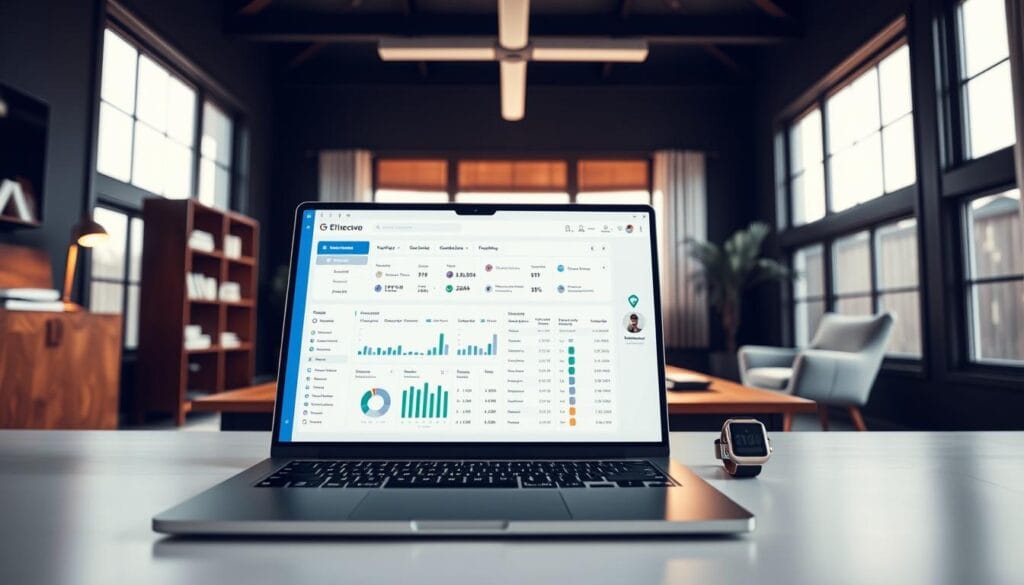
As we navigate the complexities of financial management in 2025, effective expense tracking emerges as a crucial element for achieving financial stability. The current economic landscape is characterized by unprecedented challenges, making it imperative for individuals and households to have a clear understanding of their financial outlays.
Financial Challenges in Today’s Economy
The economic volatility of the mid-2020s has created significant financial challenges for households. Inflation fluctuations and interest rate adjustments have complicated personal finance and budgeting, necessitating more sophisticated tracking tools to maintain financial stability. As a result, effective expense tracking has become essential rather than optional.
Benefits of Digital Expense Management
Digital expense management provides comprehensive visibility into spending patterns, revealing spending habits and potential areas for cost reduction that might otherwise remain hidden. Automated categorization and analysis of transactions enable financial health monitoring, allowing individuals to make informed decisions about their finances.
Statistics on Financial Health and Budgeting
Research indicates that consistent expense tracking correlates strongly with improved savings rates and reduced financial stress. Households using expense tracking applications save an average of 15-20% more annually than those who don’t track expenses systematically. Moreover, the integration of expense tracking with goal-setting features helps users visualize progress toward financial objectives, increasing motivation and commitment to budgeting.
In conclusion, effective expense tracking is vital in today’s economy, enabling individuals to manage their finances proactively and make informed decisions about their financial resources. By leveraging digital tools and maintaining a keen eye on expenses, households can navigate the complexities of the current economy with greater confidence.
Key Features to Look for in Fintech Apps for Expense Tracking 2025
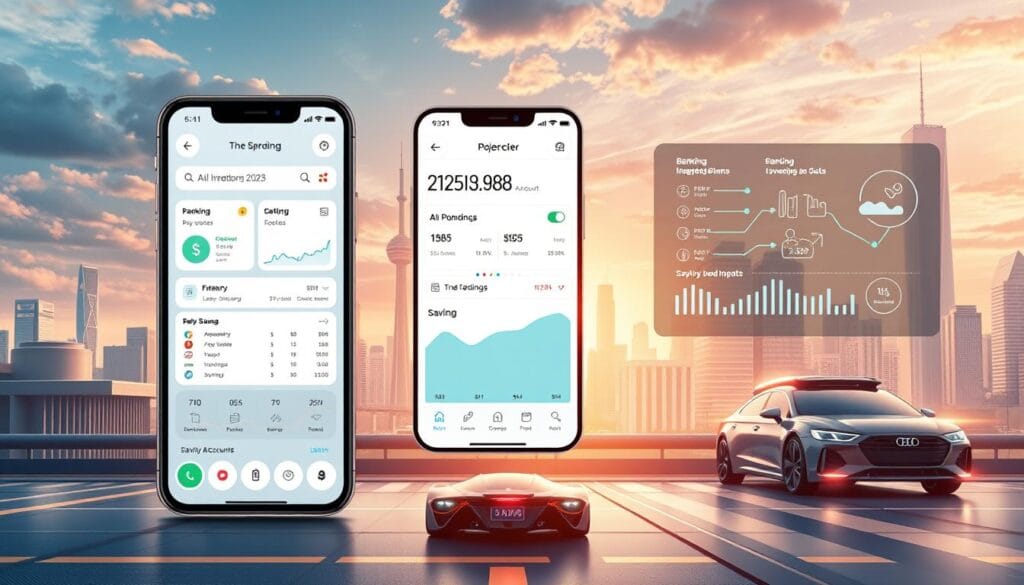
As we navigate the complex landscape of personal finance in2025, identifying the right fintech apps for expense tracking becomes crucial. The most effective expense tracking applications of2025 combine intuitive user interfaces with powerful analytical capabilities, striking a balance between simplicity and functionality.
User Experience and Interface Design
A well-designed user interface is essential for an engaging experience. Customizable dashboards and reporting options allow users to tailor the app to their financial priorities and goals. The best apps offer personalized financial insights, helping users make informed decisions.
Integration Capabilities
Cross-platform integration has become a standard requirement. Top applications seamlessly connect with banking institutions, investment platforms, and payment processors, providing a comprehensive view of one’s financial situation. Seamless integration enables users to track their expenses across various accounts and platforms.
Security and Privacy Features
Advanced security protocols, including biometric authentication and end-to-end encryption, protect sensitive financial data from unauthorized access. Users are increasingly looking for apps that prioritize data security and offer granular privacy controls.
Automation and AI Functionality
Artificial intelligence capabilities have evolved significantly, with leading applications offering predictive spending analysis and anomaly detection. These features help users stay on top of their finances and make proactive decisions.
Cost and Subscription Models
Subscription models vary widely across the market, with freemium offerings providing basic functionality while premium tiers unlock advanced features. Users need to consider the cost vs. value proposition when choosing an app.
As fintech continues to evolve, the importance of these features will only grow. By understanding what to look for in an expense tracking app, users can make informed decisions that support their financial health.
“The future of fintech lies in its ability to provide personalized, secure, and intuitive financial management solutions.”
Best All-in-One Budgeting Apps
With the increasing complexity of personal finance, users are turning to all-in-one budgeting apps that offer a unified platform for expense tracking, budget planning, and financial goal setting. These comprehensive applications have revolutionized the way individuals manage their finances, providing a streamlined approach to financial management.
For a broader perspective on personal finance apps, you can explore our article on the best personal finance apps for managing your money in.
Quicken Simplifi
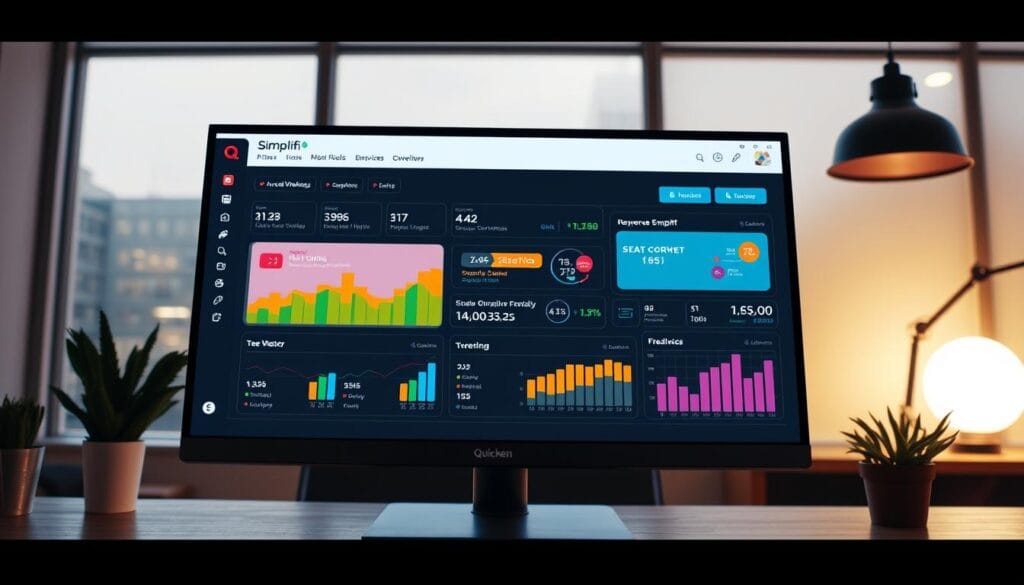
Overview
Quicken Simplifi is a robust budgeting app designed to simplify household financial management. It offers a clear and straightforward approach to tracking expenses and managing budgets.
Pros
Ease of use: Simplifi’s intuitive interface makes it easy for users to navigate and manage their finances.
Comprehensive financial overview: The app provides a detailed snapshot of the user’s financial situation, including income, expenses, and savings.
Cons
Limited advanced features: Simplifi is designed for simplicity, which may limit its appeal to users seeking more complex financial tools.
Features
Key features include automated expense tracking, budget planning, and investment monitoring. Simplifi is available for $35.88/year, with a 4.0/5 rating on the App Store and 4.2/5 on Google Play.
YNAB (You Need A Budget)
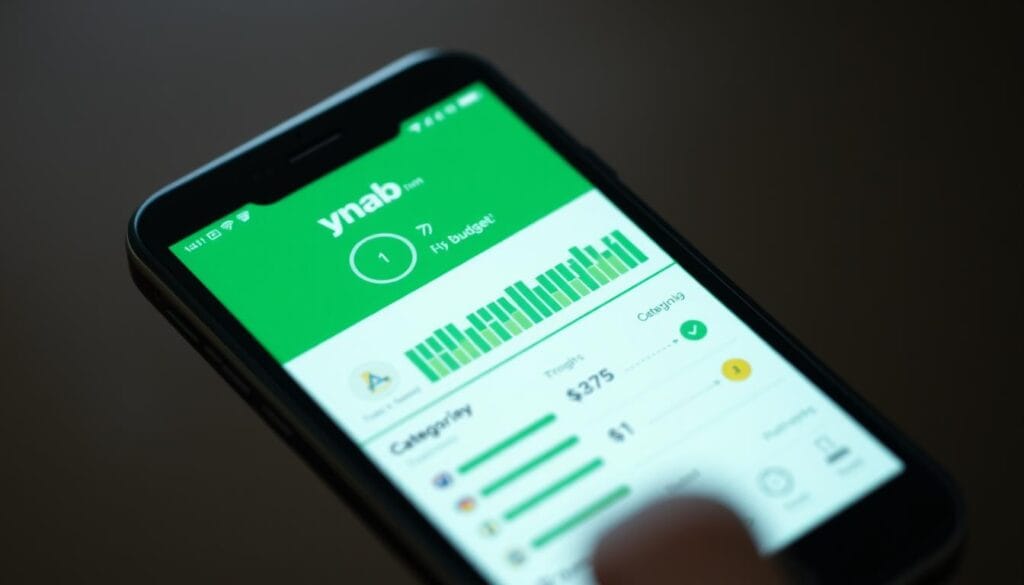
Overview
YNAB implements a proactive zero-based budgeting philosophy, where every dollar is allocated to a specific purpose, promoting financial awareness and intentionality.
Pros
Proactive budgeting approach: YNAB encourages users to assign jobs to every dollar, fostering a disciplined approach to financial management.
Cons
Steep learning curve: YNAB’s unique budgeting methodology may require time for new users to adapt.
Features
YNAB offers features such as automated savings, investment tracking, and real-time financial updates, making it a comprehensive tool for budgeting and financial planning.
Monarch Money
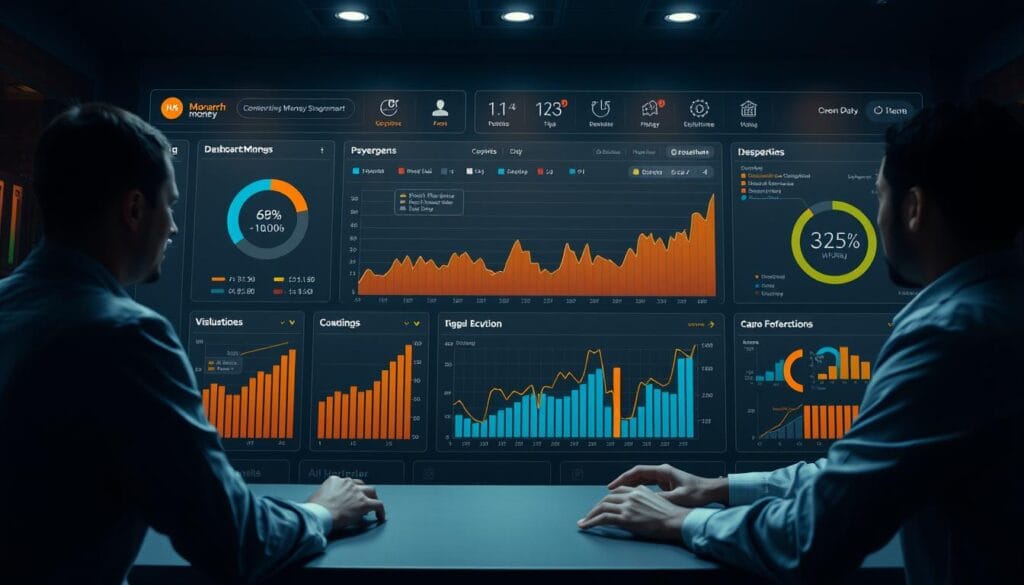
Overview
Monarch Money has emerged as a popular alternative for former Mint users, offering elegant visualization tools and collaborative features for couples and families managing shared finances.
Pros
Collaborative features: Monarch Money allows multiple users to track and manage finances together, making it ideal for households.
Cons
Limited customization: Some users may find the app’s features less customizable compared to other budgeting apps.
Features
Monarch Money offers features such as automated expense tracking, investment monitoring, and financial goal setting, providing a comprehensive financial management solution.
Top Apps for Simplified Expense Tracking
In the realm of personal finance, simplified expense tracking apps have emerged as essential tools for individuals seeking to manage their spending efficiently. These apps focus on providing streamlined, user-friendly interfaces that allow users to monitor their expenses without the complexity of comprehensive financial management platforms.
PocketGuard
Overview
PocketGuard is a popular expense tracking app known for its simplicity and effectiveness. It offers a free version along with a premium subscription, PocketGuard Plus, priced at $12.99/month or $74.99/year.
Pros
The app’s “In My Pocket” feature is particularly noteworthy, as it shows users how much discretionary spending money they have after accounting for bills, goals, and necessities. This feature helps users understand their financial standing at a glance.
Cons
Some users may find the premium features to be a bit pricey, especially if they are used to free or low-cost alternatives.
Features
PocketGuard offers automated expense tracking, categorization, and budgeting. It also provides insights into spending patterns, helping users identify areas where they can cut back.
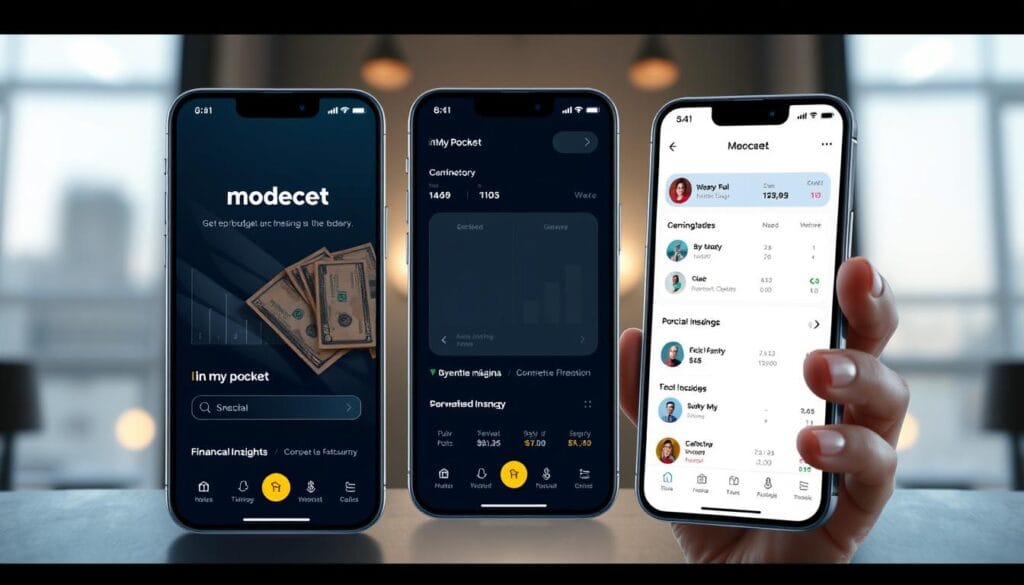
Fudget
Overview
Fudget is a minimalist budgeting app that appeals to users who prefer simplicity over comprehensive financial management features. It offers a straightforward interface that makes tracking expenses easy.
Pros
The app’s simplicity is its strongest selling point, making it accessible to users who are not tech-savvy or prefer a no-frills approach to expense tracking.
Cons
Fudget may lack some advanced features available in other apps, which could be a drawback for users seeking more comprehensive financial management tools.
Features
Fudget allows users to track their expenses, set budgets, and receive notifications when they are approaching their budget limits. Its mobile-first design ensures that users can quickly log expenses on the go.
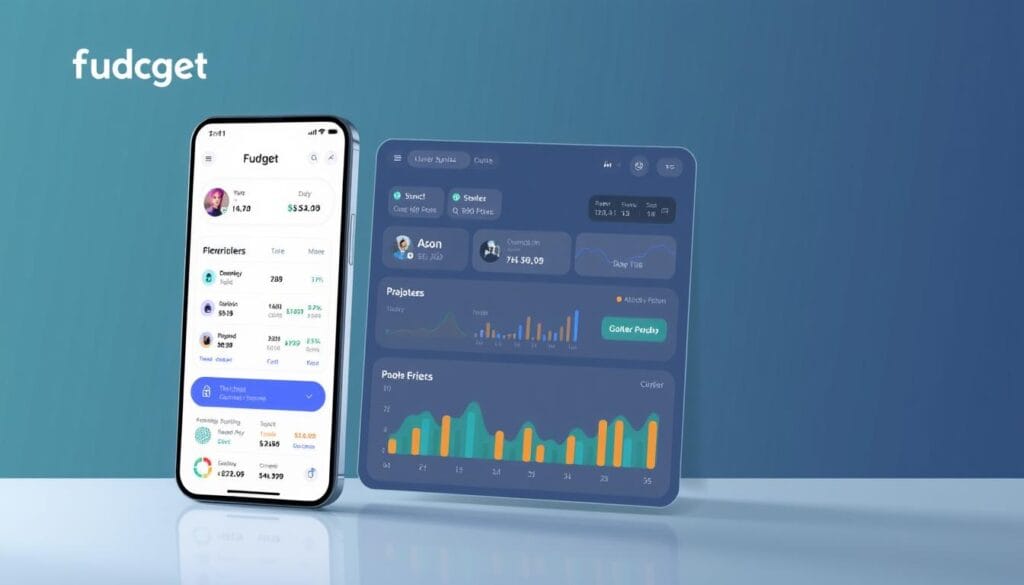
Goodbudget
Overview
Goodbudget is an envelope budgeting app that digitalizes the traditional envelope system, allowing users to allocate funds to different categories and track their spending.
Pros
The app is particularly useful for those who prefer a hands-on approach to budgeting and like visualizing their financial allocations.
Cons
Some users might find the envelope system less intuitive or more cumbersome than automated tracking methods.
Features
Goodbudget enables users to create envelopes for different spending categories, track expenses, and sync their data across multiple devices. It offers both free and paid versions, with the paid version providing additional features.

Best Mobile Banking Apps with Expense Tracking
Mobile banking applications with integrated expense tracking functionality provide the convenience of unified financial management within primary banking platforms. These apps are transforming the way users manage their finances, offering a comprehensive view of their financial health.
Discover more about AI-powered expense tracking
Chime
Overview
Chime combines digital banking services with robust expense categorization and budget monitoring features, eliminating the need for separate financial management applications.
Pros
Real-time transaction notifications provide immediate awareness of expenses, enabling users to quickly identify unauthorized charges or budget overruns.
The integration of expense tracking with actual account balances eliminates discrepancies that can occur with third-party applications.
Cons
Some users may experience limitations in customizing budget categories.
Features
Advanced security features including biometric authentication and device-specific authorization provide enhanced protection.
Cash flow forecasting capabilities leverage direct access to recurring bill information and deposit schedules.

Revolut
Overview
Revolut offers comprehensive multi-currency expense tracking capabilities, making it particularly valuable for international travelers and those who regularly transact in multiple currencies.
Pros
Multi-currency support allows users to track expenses in various currencies, simplifying international transactions.
Cons
Some users have reported issues with customer support.
Features
Real-time exchange rate updates enable users to make informed decisions about their international transactions.
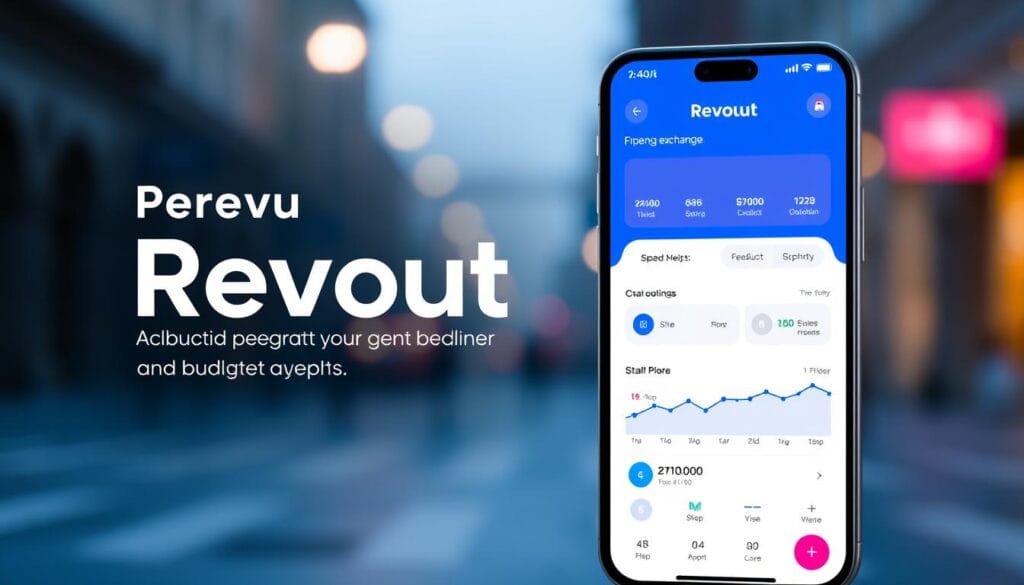
Empower Personal Dashboard
Overview
Empower Personal Dashboard provides holistic financial monitoring with an emphasis on net worth tracking and investment performance alongside day-to-day expense management.
Pros
Comprehensive financial overview helps users understand their overall financial health.
Cons
The wealth of features may be overwhelming for some users.
Features
Net worth tracking and investment performance monitoring are key features that set Empower apart.
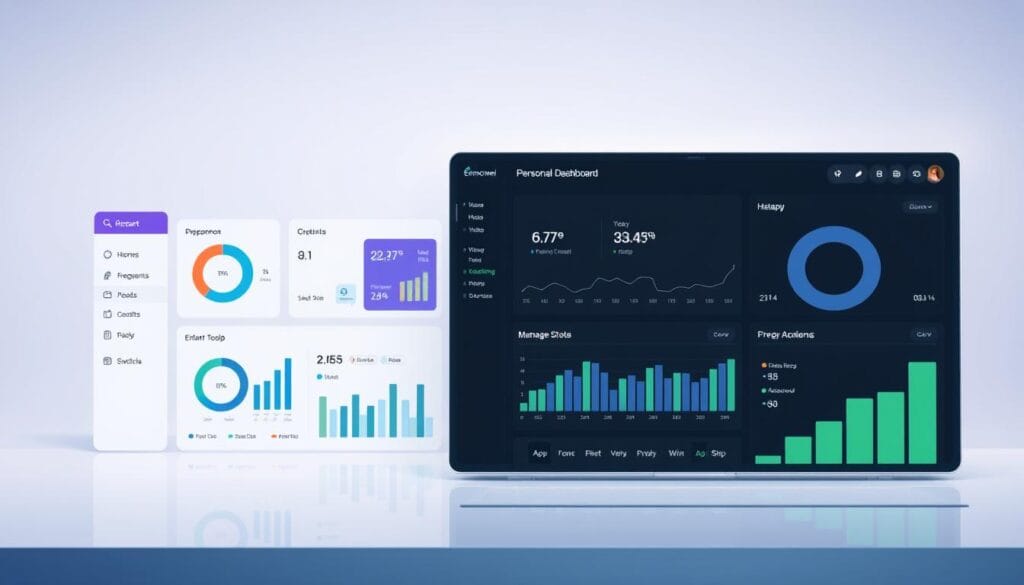
Specialized Apps for Debt Management and Savings
As financial management becomes increasingly digital, specialized apps for debt management and savings have emerged as crucial tools. These applications focus on specific financial objectives, providing targeted tools for debt reduction or savings accumulation.
EveryDollar
Overview
EveryDollar, developed by Ramsey Solutions, implements Dave Ramsey’s financial philosophy with a particular emphasis on debt snowball methodology and zero-based budgeting principles. This approach helps users create a personalized budget and debt repayment plan.
Pros
EveryDollar’s strength lies in its simplicity and adherence to a well-established financial philosophy. The app offers a free version, with a premium subscription providing additional features such as automated savings and investment tracking.
Cons
Some users may find the app’s strict adherence to zero-based budgeting challenging, requiring meticulous tracking of every transaction.
Features
Key Features: Debt snowball planning, zero-based budgeting, automated savings (premium), investment tracking (premium). EveryDollar’s user-friendly interface makes it easy to track financial progress.
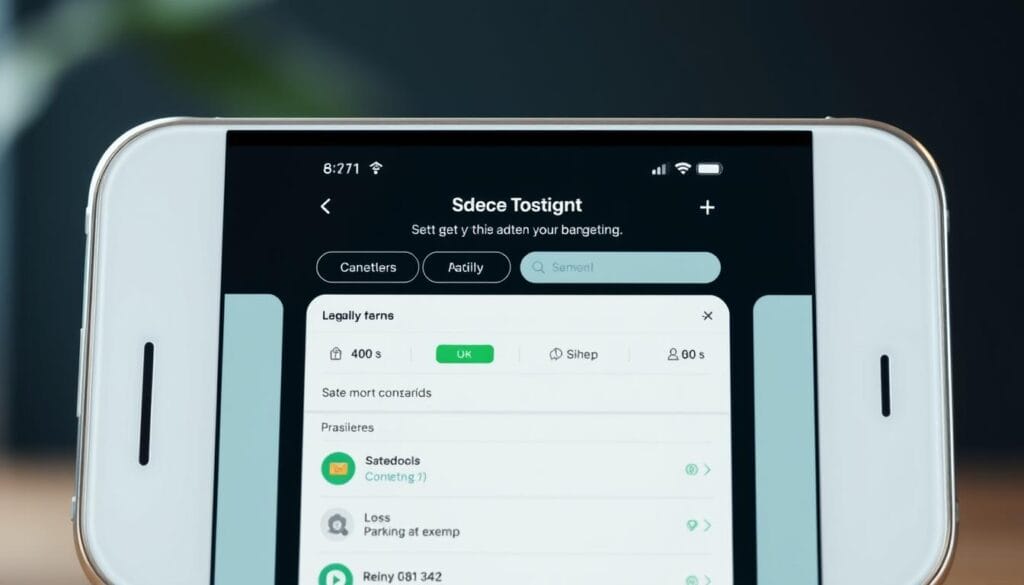
Qapital
Overview
Qapital differentiates itself through behavioral economics-based savings triggers that automatically transfer funds based on customizable rules and spending habits. This approach helps users save money without having to think about it.
Pros
Qapital’s automated savings feature makes it easy for users to build savings habits. The app also provides a clear visualization of progress toward financial goals.
Cons
Some users may find the rules-based system limiting if they have complex financial situations.
Features
Key Features: Automated savings triggers, customizable rules, goal tracking, progress visualization. Qapital’s flexible savings rules allow users to tailor the app to their financial needs.
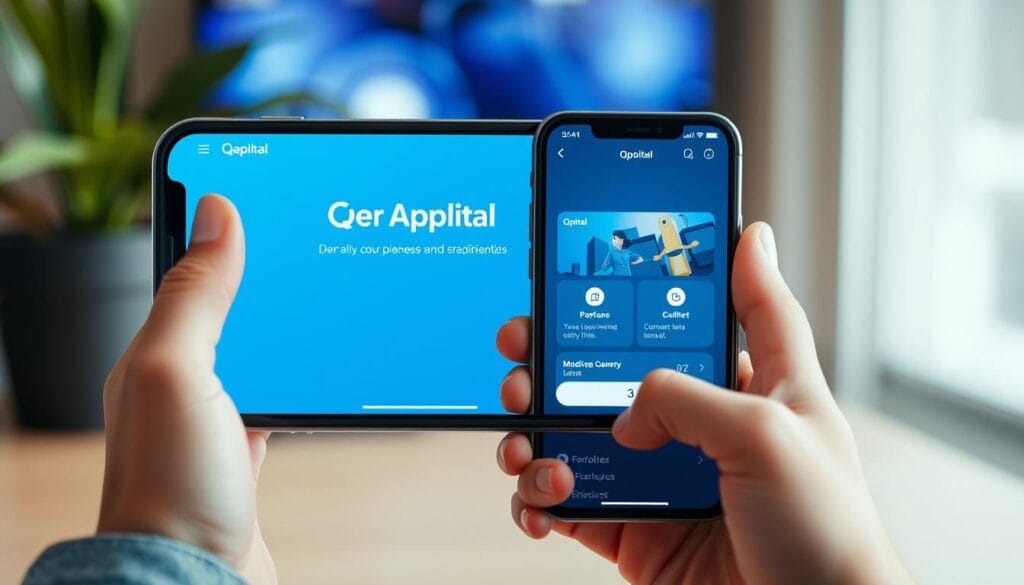
Best Apps for Freelancers and Small Business Owners
For freelancers and small business owners, having the right expense tracking app can make a significant difference in financial organization.
CountAbout
CountAbout offers comprehensive financial management tools specifically tailored to sole proprietors and freelancers.
Overview
CountAbout is designed to help freelancers manage their finances effectively, with features that simplify expense tracking and tax preparation.
Pros
Customizable categories that align with tax reporting requirements make it easier for users to track expenses. The app also offers a 45-day free trial, allowing users to test its features before committing to a subscription.
Cons
Some users may find the premium features to be an additional cost, although these are available after the free trial period.
Features
CountAbout’s features include expense tracking, receipt capture, and financial reporting capabilities that facilitate quarterly tax preparation and annual financial statement generation.
![]()
Prism
Prism focuses on streamlined bill management and payment scheduling, helping small business owners maintain vendor relationships through timely payments.
Overview
Prism is designed to simplify bill management for small business owners, ensuring that payments are made on time.
Pros
The app offers comprehensive payment records and timely payment reminders, helping businesses maintain a good credit score.
Cons
Some users might find the user interface not as intuitive as other apps, requiring a learning curve.
Features
Prism’s features include bill tracking, payment scheduling, and vendor management, making it easier for businesses to manage their financial obligations.
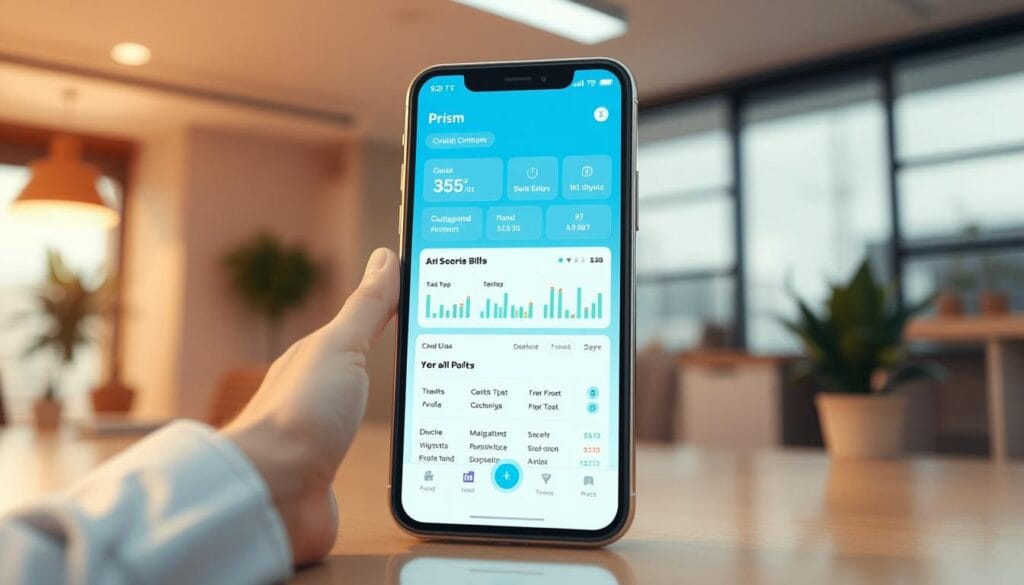
Top Payment Apps with Expense Tracking Features
The convergence of payment processing and expense tracking in a single platform is transforming the fintech industry. Payment applications with integrated expense tracking features combine transaction functionality with financial management capabilities, providing unified platforms for money movement and budget monitoring.
Cash App
Overview
Cash App has evolved beyond simple peer-to-peer payments to include categorization of transactions, spending analysis, and budget tracking features within its financial ecosystem. It offers seamless money transfers, free standard transfers, and fast direct deposits, making it a comprehensive financial tool.
Pros
The app provides no maintenance fees and includes a Cash Card for spending and ATM withdrawals. Its investing and crypto features are also noteworthy.
Cons
Transaction limits for new users and fees on some transactions are potential drawbacks. Additionally, it has limited fraud protection and no FDIC insurance unless linked to a Cash Card.
Features
Key features include real-time transaction recording and card-based spending through the Cash Card, which automatically integrates with the expense tracking system.

Venmo
Overview
Venmo incorporates social elements into expense tracking, allowing users to monitor shared expenses and split costs while maintaining transaction records organized by person or purpose.
Pros
Its social features make it easy to manage shared expenses and track payments among friends or groups.
Cons
Some users may find the social aspect less desirable for personal expense tracking due to privacy concerns.
Features
Venmo’s key feature is its ability to track and split expenses among users, making it ideal for social transactions.
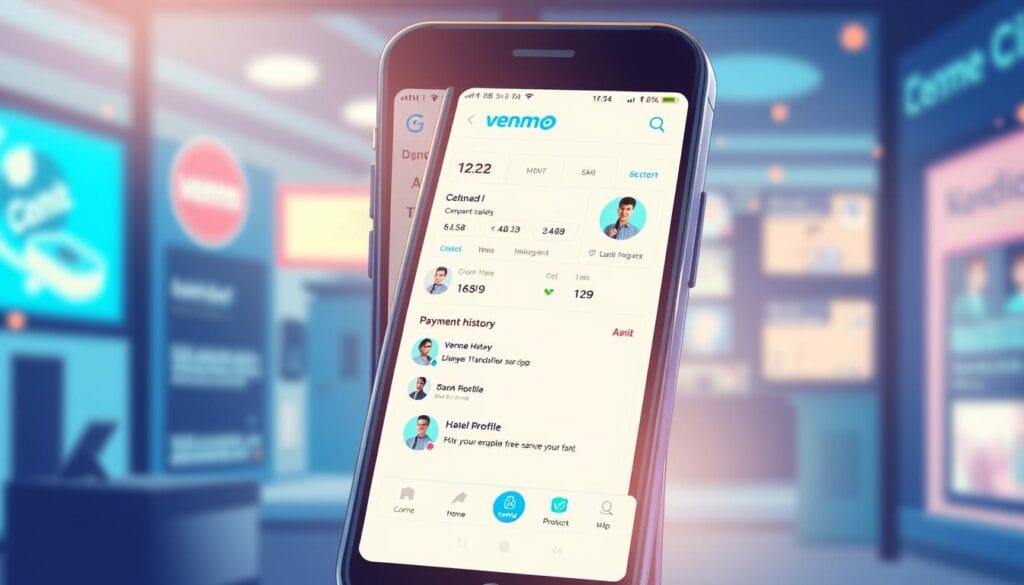
PayPal
Overview
PayPal offers business-oriented expense tracking that integrates with its payment processing, providing merchants with transaction categorization and financial reporting capabilities. For more information on peer-to-peer payment apps, you can visit this link.
Pros
Its robust payment processing and financial reporting features make it a valuable tool for businesses.
Cons
Some users may find the fees associated with certain transactions to be a drawback.
Features
PayPal’s features include transaction categorization and detailed financial reporting, making it suitable for business expense tracking.
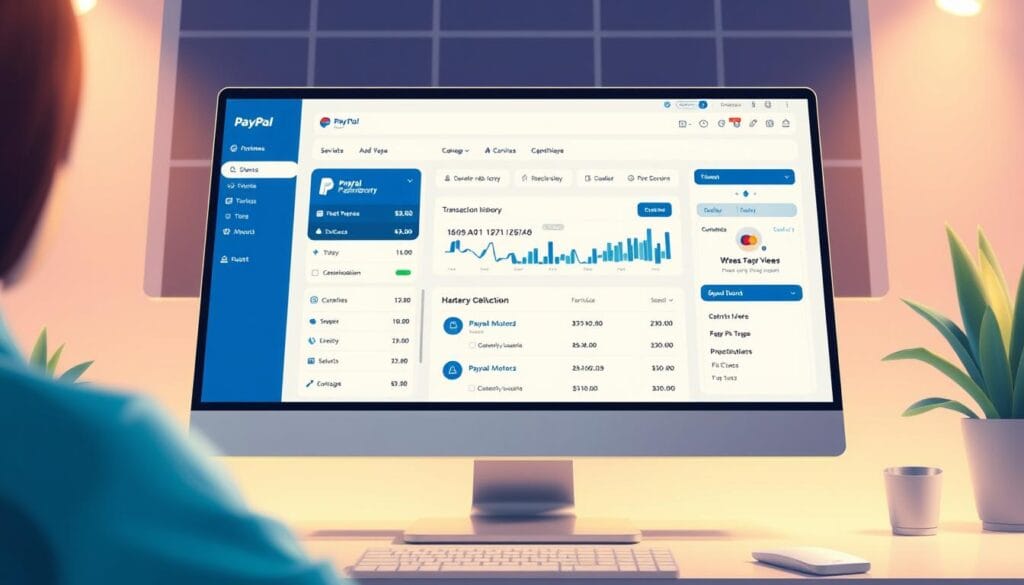
These payment platforms typically offer stronger transaction search and filtering capabilities compared to traditional expense tracking applications. The integration of payment and expense tracking eliminates the need to reconcile transactions across multiple platforms, reducing data entry requirements and potential discrepancies.
Apps for International Expense Tracking
Managing finances across multiple currencies and countries requires specialized tools, and several apps have emerged to address this need. International expense tracking applications are designed to handle the unique challenges of cross-border transactions, exchange rate fluctuations, and multi-currency management.
Wise
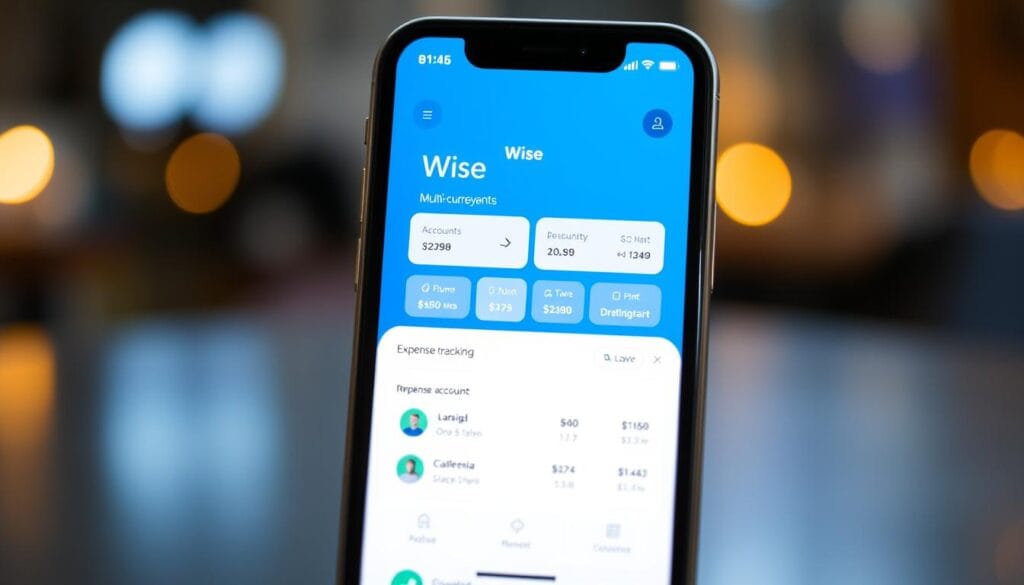
Overview
Wise (formerly TransferWise) is a leading international money transfer app that has expanded its services to include expense tracking features. It offers multi-currency accounts, allowing users to manage various currencies within a single account.
Pros
Wise provides cost-effective currency exchange with low and transparent fees. It enables fast and secure international transfers and offers a Wise Debit Card for convenient spending abroad.
Cons
Some users have reported limited availability in certain regions, and exchange rates can fluctuate. Additionally, Wise may not be ideal for large business transactions, and there have been instances of sudden account deactivations.
Features
Wise’s key features include multi-currency accounts, real-time currency conversion, and transparent exchange rates. It also offers location-based expense categorization and receipt capture with multi-language recognition, making it a robust tool for international expense tracking.
N26
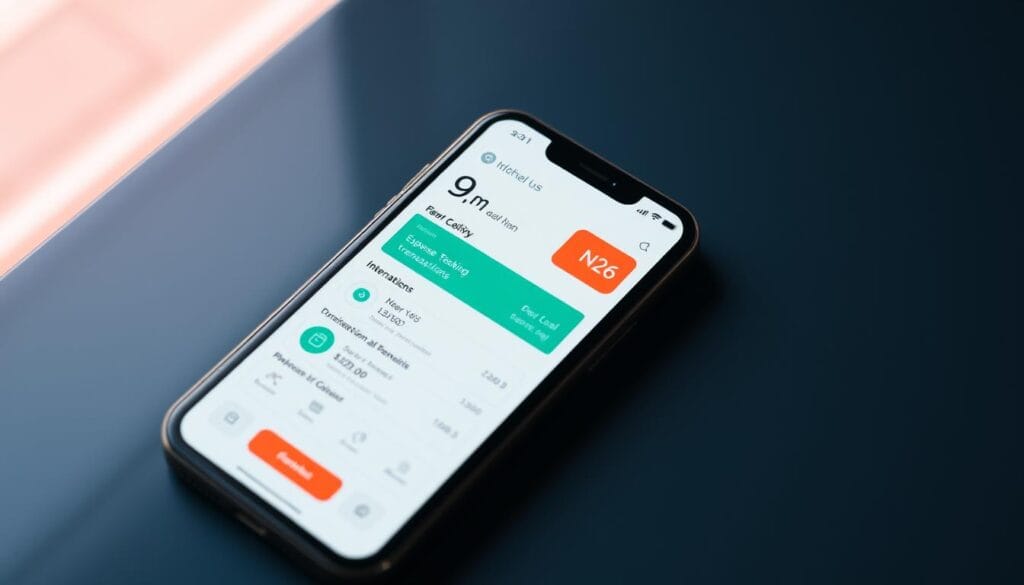
Overview
N26 is a digital banking platform that includes comprehensive expense tracking features, particularly useful for international transactions. It provides real-time spending updates and categorization across multiple currencies.
Pros
N26 offers integrated expense tracking within its digital banking platform, allowing for specialized categorization of international transactions. It provides real-time spending updates and supports multiple currencies.
Cons
Some users have reported that N26’s customer support can be improved, and there may be fees associated with certain international transactions.
Features
N26’s features include real-time expense tracking, multi-currency support, and automated expense categorization. It also offers insights into spending patterns across different currencies, helping users manage their international expenses effectively.
Investment Tracking Apps
In the digital age, investment tracking apps have emerged as essential platforms for investment management, offering users a comprehensive view of their financial portfolios.
Robinhood
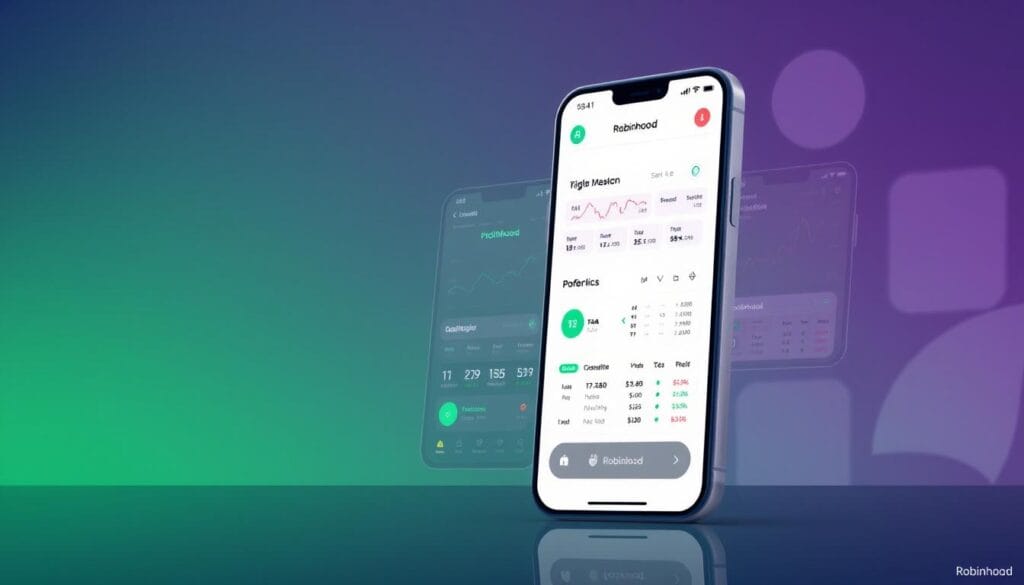
Overview
Robinhood is a popular investment app known for its commission-free trading on stocks, ETFs, options, and cryptocurrencies. It has expanded its features beyond trading to include expense categorization and budget tracking, helping users optimize their cash flow for investment opportunities.
Pros
No commission fees for buying and selling stocks, ETFs, and options, making it an attractive option for frequent traders. Users can also buy and sell fractional shares with as little as $1.
Cons
While Robinhood offers a range of features, it may lack the advanced investment tracking and analysis tools available in other platforms. Users have also reported occasional service disruptions during peak trading times.
Features
Robinhood’s features include automated investment tracking and management for diversified portfolios, access to live market data, and real-time quotes. The app also provides educational content to help users make informed investment decisions. For those looking to start investing, Robinhood’s platform is a good starting point, and you can learn more about micro-investing platforms to complement your investment strategy.
Acorns
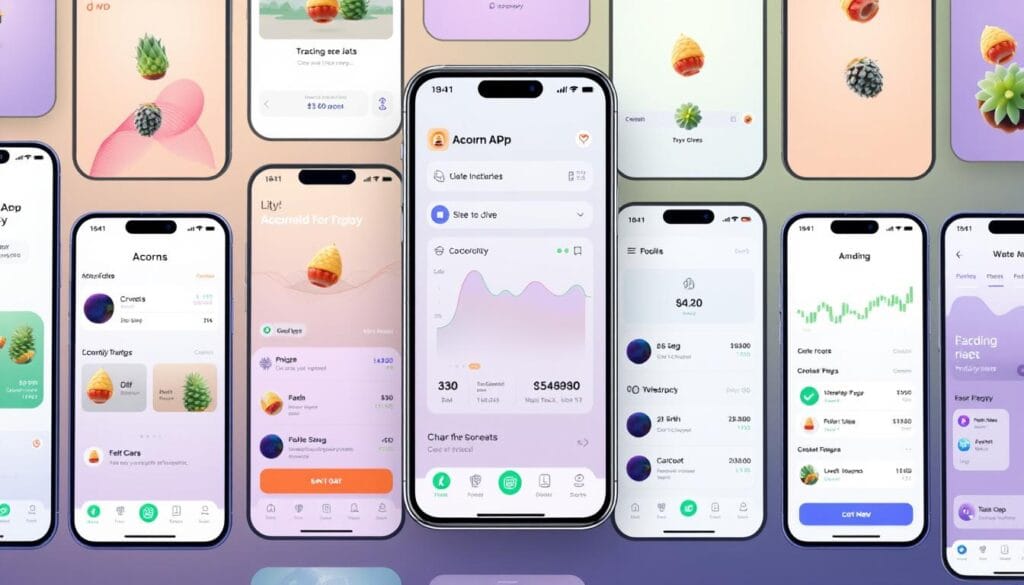
Overview
Acorns is a micro-investing app that implements a “round-up” approach, automatically converting small expense transactions into investment contributions. This approach directly links spending behavior to portfolio growth.
Pros
The Acorns app is user-friendly and makes investing accessible to beginners. Its automated investment feature helps users build investment habits without requiring significant upfront capital.
Cons
Acorns charges a monthly fee, which can be a drawback for users with small accounts. Additionally, the investment options, while diversified, may not be as extensive as those offered by other platforms.
Features
Acorns offers features such as automated round-up investments, retirement accounts, and educational content focused on personal finance and investing. The app helps users understand the relationship between their spending decisions and long-term investment outcomes.
Credit Monitoring Apps with Expense Insights
The integration of credit monitoring and expense tracking in financial apps is providing users with a more comprehensive view of their financial situation. These applications combine the benefits of tracking credit scores with detailed expense analysis, helping users understand how their spending habits impact their creditworthiness.
Credit Karma
![]()
Overview
Credit Karma offers comprehensive credit monitoring alongside transaction categorization and budget tracking features. This enables users to identify spending patterns that affect their credit utilization.
Pros
Free service with high ratings on both App Store (4.7/5 based on 2.9M+ reviews) and Google Play (4.8/5 based on 7M+ reviews).
Cons
Some users may find the credit monitoring features overwhelming, and there might be limitations in budgeting tools compared to dedicated expense tracking apps.
Features
Credit Karma provides detailed credit score tracking, transaction categorization, and budget tracking. It also offers debt reduction simulators and payment timing recommendations to help users optimize their financial health.
Emma
![]()
Overview
Emma focuses on subscription tracking and recurring expense identification, helping users eliminate unnecessary charges that could impact their overall financial health and credit standing.
Pros
Emma’s focus on subscription management helps users avoid unwanted charges and improve their financial management.
Cons
The app might not offer as comprehensive credit monitoring as other specialized services.
Features
Emma provides detailed insights into recurring expenses and helps users manage their subscriptions effectively, contributing to better financial health.
How to Choose the Right Expense Tracking App for Your Needs
To effectively manage your expenses, it’s crucial to choose an expense tracking app that aligns with your financial goals and technical comfort level. The process involves several key considerations to ensure that the selected app meets your specific needs.
Assessing Your Financial Goals
Begin by clearly defining your primary financial goals, whether it’s debt reduction, savings accumulation, or gaining visibility into spending patterns. This step is crucial in determining the features you need in an expense tracking app.
Considering Your Technical Comfort Level
Your technical comfort level and the amount of time you’re willing to invest in financial management are critical factors. More comprehensive platforms typically require greater user engagement, so it’s essential to choose an app that fits your level of comfort with technology.
Evaluating Cost vs. Value
When evaluating the cost of an expense tracking app, consider the potential value it brings to your budgeting and personal finance management. Assess whether the benefits of improved expense management outweigh the application fees.
By carefully assessing your financial objectives, technical capabilities, and the cost versus value of various platforms, you can select the most appropriate tool for your needs. This thoughtful approach ensures that you find an app that not only meets your requirements but also enhances your overall financial management.
Tips for Maximizing Your Expense Tracking App
Transforming your financial habits begins with optimizing your use of an expense tracking app. To achieve this, several strategies can be employed to enhance the app’s effectiveness as a tool for financial management.
Setting Up Automated Systems
Establishing automated systems within your expense tracking app is crucial. This includes synchronizing all financial accounts to ensure comprehensive data collection without manual entry. Customizing expense categories to align with your financial priorities is also essential.
Regular Review Practices
Scheduling regular review sessions, whether weekly or monthly, helps analyze spending patterns, identify trends, and assess progress toward financial goals. Utilizing notification features strategically for unusual transactions or budget thresholds can also enhance financial oversight.
Using Insights to Adjust Your Budget
Leveraging historical data analysis to identify seasonal spending patterns allows for proactive adjustments to your budget. Experimenting with different budgeting methodologies within the app can help determine the most effective approach for your financial discipline. For more tailored advice, consider exploring resources like AI-powered budgeting tools.
Conclusion: The Future of Fintech Apps for Expense Tracking
As we look to the future, fintech apps for expense tracking are poised for significant advancements. The evolution of these applications continues to accelerate, with emerging technologies promising even more powerful and intuitive financial management tools in the coming years.
The future of expense tracking will be shaped by several key developments. Artificial intelligence capabilities will become increasingly sophisticated, offering predictive financial insights and proactive recommendations based on individual spending patterns and financial goals. Additionally, voice-activated financial management through smart assistants and devices will streamline expense tracking and budget queries.
Other significant advancements include the expansion of open banking standards globally, enabling more seamless data sharing between financial institutions and authorized applications. Blockchain technology may also enhance transaction verification and security. As these technologies mature, expense tracking will increasingly shift from reactive monitoring to proactive financial optimization, fundamentally transforming how users interact with their finances over time using various tools and platforms.

